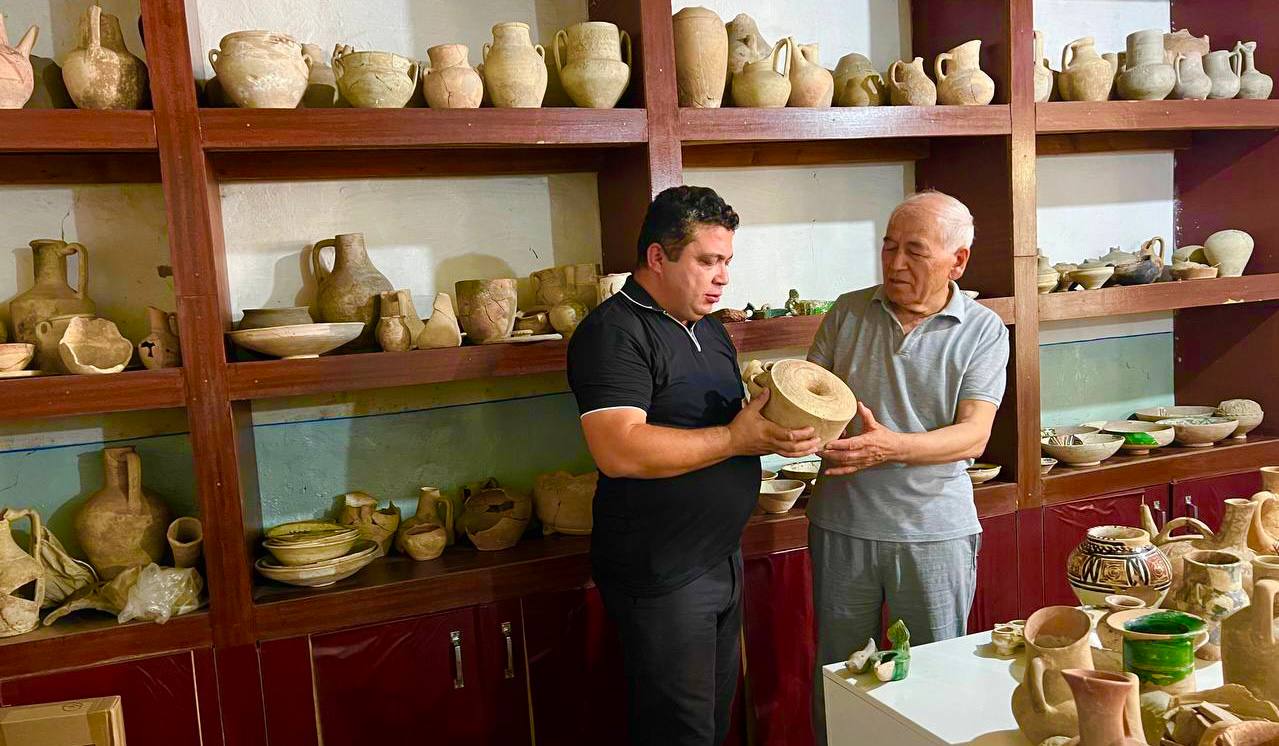Millennia-old artifacts have been discovered in Akhsikent

During research conducted at Excavation Site XI of the Akhsikent archaeological monument, archaeologists uncovered significant historical findings.
In the lower layer of a 10-by-15-meter perimeter, a red-slip ceramic jug dating back to the 1st–2nd centuries CE was found intact. Experts suggest that the vessel may have been used for medical purposes, particularly for storing liquids intended for treatment possibly mercury.
Mercury, known as a naturally occurring liquid element with highly reactive properties, was widely used in medicine, industry, and military fields in the past. Sources indicate that the technology of utilizing mercury existed in Akhsikent during the medieval period.
In the upper layers of the excavation (11th–12th centuries), several objects related to scientific activity were discovered, including mercury storage vessels, inkwells, chemical substances, and remains of a workshop (laboratory) used for separating geological elements.
These findings provide valuable insights not only into the daily life of Akhsikent’s inhabitants but also into their knowledge and experience in medieval science, alchemy, and geology.
The excavation also revealed objects reflecting the lifestyle and aesthetic taste of the population, such as a figurine of a water bird, caravan flasks, ornamental toys, cradle vessels, as well as copper and bronze coins and various metal items.
In this season alone, nearly 4,000 archaeological artifacts and four major engineering structures have been identified, further reinforcing Akhsikent’s role as a center of society, science, and craftsmanship.
For reference, within the framework of the “Steel Road” and “Bronze Road” projects, the history of Akhsikent and exhibits related to steel production are being studied in collaboration between the Institute of Archaeology at the University of London and the Center of Islamic Civilization. These projects are being carried out jointly with Uzbek scholars and are planned to be presented in the museum exhibition of the Center.
Most read

Over 100 experts from more than 20 countries of the world are in Tashkent!

President of Serbia Aleksandar Vučić visited the Islamic Civilization Center in Uzbekistan

The Center for Islamic Civilization – a global platform leading towards enlightenment











